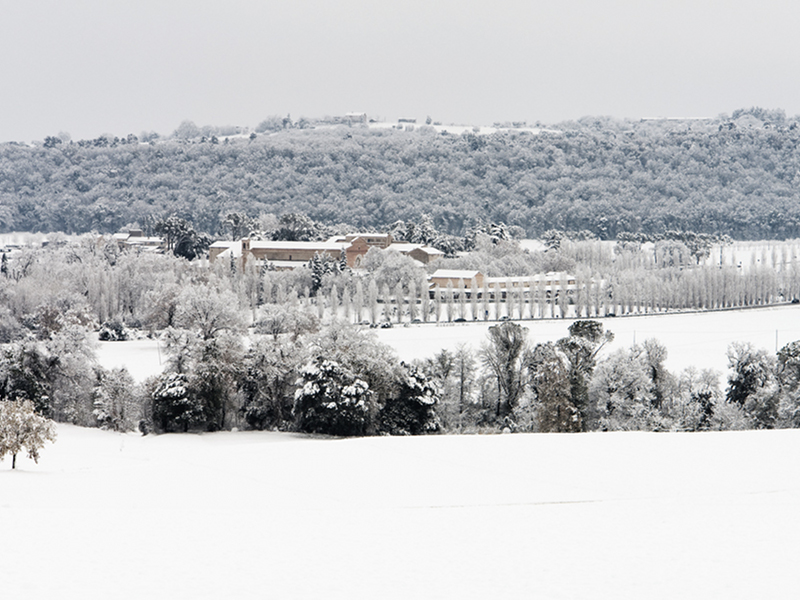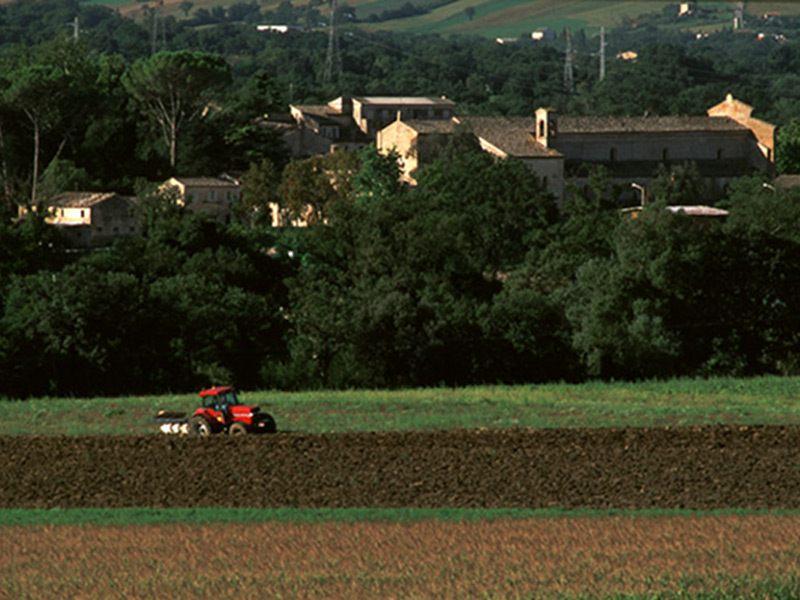Riserva naturale statale Abbadia di Fiastra
www.abbadiafiastra.netProtected Area
Identity Card
- Land Surface Area: 1'800.00 ha
- Regions: Marche
- Provinces: Macerata
- Municipalities: Tolentino, Urbisaglia
- Establishment Measures: DMAF 10/12/1985
- PA Official List: EUAP0090
- Park Authority: Fondazione Giustiniani Bandini
Nature
The heart of the Nature Reserve consists of the "Selva" which is a wood which has remained miraculously intact up to the present days, initially thanks to the Cistercian monks who, needing a lone place and a woodland (the hermitage) where they could stay and pray for long periods, saved from the cutting this wonderful forest, and then thanks to the Bandini family, which created here a hunting reserve, and finally thanks to Regione Marche which, aware of the considerable value of this biotope, decided to protect it and declared it, according to the regional law n. 52/74, "Area Floristica Protetta" inserting it in the Sites of Community Interest (S.C.I.) according to what established by the Directive "Habitat".
Territory
Abbadia di Fiastra Nature Reserve extends itself for about 1,800
hectares in the territories of the Towns of Tolentino and Urbisaglia,
in the middle hills of the province of Macerata, between 130 and 306
meters.
The natural environment is divided in three different areas:
- the agricultural area, which represents an invaluable heritage if we consider the current quality of urban life;
- the watercourses (the stream Entogge and the river Fiastra), with their typical fauna and riparian vegetation, and the artificial lake "le Vene", which has been the object of an interesting project of naturalistic requalification;
- the Selva, a wood with a surface of more than 100 hectares, preserved by the Cistercian monks first, and then by the Bandini family, and finally by the Region of Marche which transformed it into a "Area Floristica Protetta" (protected floristic area).
The History of the Reserve
The value of the Reserve is linked to its history. In 1142, the Cistercian Abbey of S.Maria di Chiaravalle di Fiastra was built here: it was one of the
most important monastic settlements of the central part of Italy, and
it was for more than three centuries the center of economic, social and
cultural activities. It was sacked in 1422 by the troops of Braccio da
Montone, Lord of Perugia, and from this moment the power of the
Cistercian monks began its decadence. After this episode, the abbey
administration was entrusted by the Holy See to the "Commendatari"
cardinals, then to the "Compagnia di Gesù" in 1581 for about two
centuries. Finally, the noble family Giustiniani Bandini became the
owner. In 1918 the last male heir of the family, Sigismondo, died, and
all his properties were left to a Foundation with his name.
Abbadia
di Fiastra Nature Reserve was officially established on 18th June 1984
through an agreement between Regione Marche and the Giustiniani Bandini
Foundation, and it was subsequently recognized with a Decree of Ministero dell'Agricoltura e Foreste on 10th December 1985 (the Decree was published on Gazzetta Ufficiale of 7th January 1986) as a "Riserva Naturale dello Stato".
A Management according to the 'Regola'
"Ora et Labora", "Cruce et aratro": these are the main rules of the Cistercian monks in Abbadia di Fiastra. Following these rules they have created an invaluable heritage which added further value to this territory.
Nowadays the Reserve is managed by Giustiniani Bandini Foundation (Ente Morale recognized
with D.P.R. of 6.7.1974), in cooperation with all the local authorities
involved: its main aims are the preservation of nature and of its
resources in which the territory of the Abbadia lies, the
development of the agricultural activity, and the safeguard of the
ancient Cistercian Abbey, of the prince palace, and of all the other
precious historical-architectonic evidences of the past.
In order
to hand this heritage down to future generations and at the same time
to meet the social-economical needs of the local population, the
territory of the Abbadia has been divided into three areas with common features, but managed according to different criteria.
- In the first area or Riserva Naturale Orientata (including the Selva), the main aim is to carry out the nature development in order to reach country planning very similar to the original ones.
- The second area or Riserva Antropologica (including the Cistercian Abbey, the Giustiniani Bandini palace, part
of the cultivated fields, the river Fiastra and its reparian
vegetation) is aimed to make the most of the historical-architectonic
heritage created by man during the centuries, and at the same time to
promote an effective action to safeguard nature and its resources.
- The third area or Protezione, (including the remaining part of the Giustiniani Bandini Foundation) has been created to guarantee a balanced relationship between the reserve and the surrounding territory.







